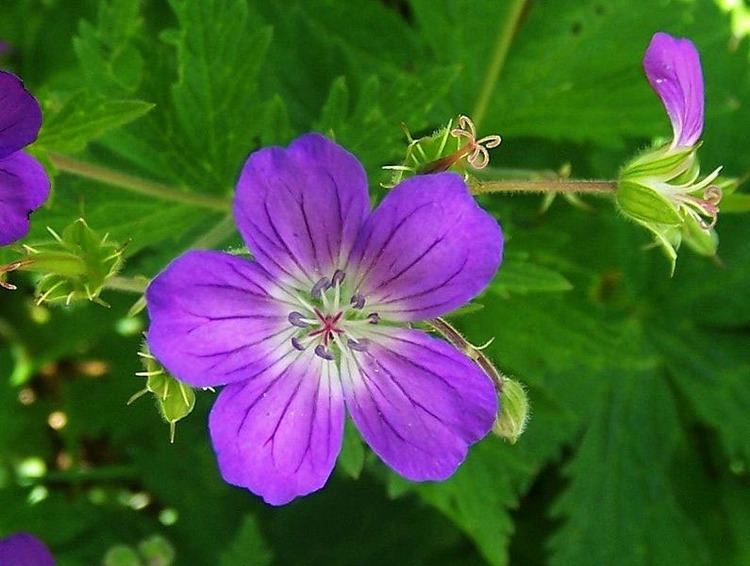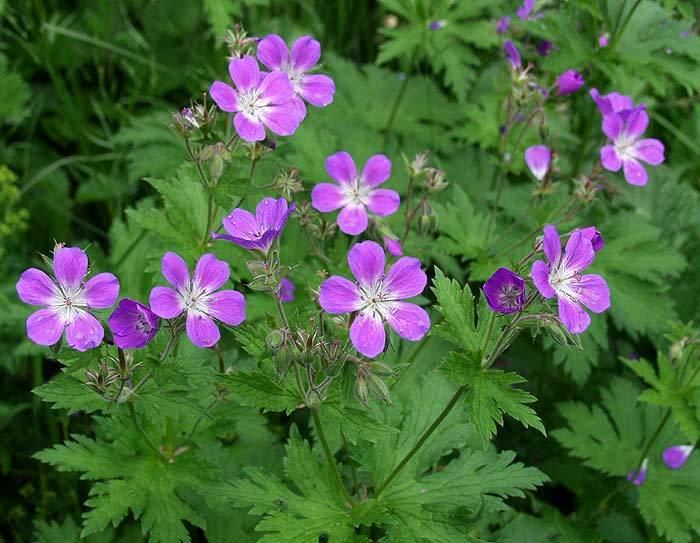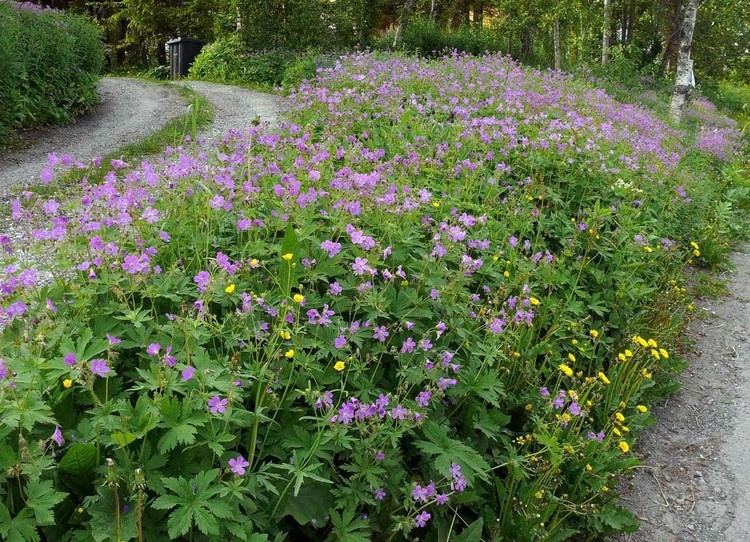Rank Species | Genus Geranium Higher classification Crane's-bill | |
 | ||
Similar Crane's‑bill, Geranium pratense, Geranium phaeum, Geranium sanguineum, Geum rivale | ||
Wood cranesbill geranium sylvaticum
Geranium sylvaticum (wood cranesbill, woodland geranium) is a species of hardy flowering plant in the Geraniaceae family, native to Europe and northern Turkey.
Contents
- Wood cranesbill geranium sylvaticum
- Wood cranesbill geranium sylvaticum nature insights
- Description
- Cultivation
- Uses and traditions
- References

The Latin specific epithet sylvaticum means "of woodland", referring to the plant's native habitat, as does its common name "wood cranesbill".

Wood cranesbill geranium sylvaticum nature insights
Description

It growing to 75 cm (30 in) tall by 60 cm (24 in) wide, it is a mound-forming herbaceous perennial with deeply cut and toothed 7-lobed basal leaves. In summer, flowers are borne on stalks with ruffs of leaves. The flower colour ranges from mauve to sky blue, depending on soil conditions.It has 10 stamens and glandular-hairy fruits.
Cultivation

G. sylvaticum is one of many Geranium species which are valued in gardens. It is suitable for cultivation in temperate climates in reliably moist, lightly shaded positions, as the name suggests. It is particularly useful for underplanting deciduous trees, roses, lilies, and other summer-flowering subjects. Various cultivars have been selected, of which 'Album' and 'Mayflower' have gained the Royal Horticultural Society's Award of Garden Merit.
Uses and traditions
It is the city flower of Sheffield in the United Kingdom.
The flowers yield a blue-gray dye that was used in ancient Europe to dye war cloaks, believing it would protect them in battle. For this reason it was called Odin's Grace.
